 The Ulysse Nardin Ulysse 1 watches, technically and aesthetically beautiful, honor the horological pioneer whose name is by now, a legend. They feature the same amazing power reserve indication as the Macho Palladium: both the hand and the underlying disk move. It comes in pink gold and in a limited edition in platinum.
The Ulysse Nardin Ulysse 1 watches, technically and aesthetically beautiful, honor the horological pioneer whose name is by now, a legend. They feature the same amazing power reserve indication as the Macho Palladium: both the hand and the underlying disk move. It comes in pink gold and in a limited edition in platinum.
11.2.09
Ulysse Nardin Ulysse Collection
 The Ulysse Nardin Ulysse 1 watches, technically and aesthetically beautiful, honor the horological pioneer whose name is by now, a legend. They feature the same amazing power reserve indication as the Macho Palladium: both the hand and the underlying disk move. It comes in pink gold and in a limited edition in platinum.
The Ulysse Nardin Ulysse 1 watches, technically and aesthetically beautiful, honor the horological pioneer whose name is by now, a legend. They feature the same amazing power reserve indication as the Macho Palladium: both the hand and the underlying disk move. It comes in pink gold and in a limited edition in platinum.
Ulysse Nardin San Marco
 At the time of Ulysse Nardin's revival in 1983, it didn't only set out to perpetuate it's many great mechanical achievements, but also to restore the art of enameling, which involves the meticulous process of filling delicate patterns outlined by gold wire with vitreous enamels which are then repeatedly kiln fired layer by layer to achieve the proper consistency and color. It is this rare art that decorates the Ulysse Nardin San Marco collection with famous naval scenes, ships, or renowned historical architecture. The Ulysse Nardin San Marco lady is available in yellow gold or white gold.
At the time of Ulysse Nardin's revival in 1983, it didn't only set out to perpetuate it's many great mechanical achievements, but also to restore the art of enameling, which involves the meticulous process of filling delicate patterns outlined by gold wire with vitreous enamels which are then repeatedly kiln fired layer by layer to achieve the proper consistency and color. It is this rare art that decorates the Ulysse Nardin San Marco collection with famous naval scenes, ships, or renowned historical architecture. The Ulysse Nardin San Marco lady is available in yellow gold or white gold.
Ulysse Nardin Michelangelo
 In 1995 Ulysse Nardin patented the Big Date dual window display, adjustable both forward and backwards, which is now in use in the beautiful tonneau shape of the Ulysse Nardin Michelangelo. There are several other complications available, including a dual time with dual pushers (like the GMT+-), a chronograph, and a uniquely designed perpetual calendar, the Ulysse Nardin Michelangelo Perpetual Ludovico. Ulysse Nardin also offers the Michelangelo in a Lady and Midsize version, utilizing the smooth lines of the tonneau shape to create a very elegant and feminine watch. The Ulysse Nardin Michelangelo lady watch is also available tastefully decorated in pave diamond patterns.
In 1995 Ulysse Nardin patented the Big Date dual window display, adjustable both forward and backwards, which is now in use in the beautiful tonneau shape of the Ulysse Nardin Michelangelo. There are several other complications available, including a dual time with dual pushers (like the GMT+-), a chronograph, and a uniquely designed perpetual calendar, the Ulysse Nardin Michelangelo Perpetual Ludovico. Ulysse Nardin also offers the Michelangelo in a Lady and Midsize version, utilizing the smooth lines of the tonneau shape to create a very elegant and feminine watch. The Ulysse Nardin Michelangelo lady watch is also available tastefully decorated in pave diamond patterns.
Ulysse Nardin Marine Collection
 Ulysse Nardin celebrates their history with the Marine collection by producing a whole line of marine chronometers, which gave fame to the company on their early days and are still very priced by enthusiasts and collectors. There is a varied selection of movements, from a perpetual calendar mechanism, power reserve indicator, the chronograph, or the annual calendar with chronograph, and of materials, like stainless steel, pink gold or white gold, all of them notable for their water resistance, accuracy on timekeeping, and fine hand finished surfaces.
Ulysse Nardin celebrates their history with the Marine collection by producing a whole line of marine chronometers, which gave fame to the company on their early days and are still very priced by enthusiasts and collectors. There is a varied selection of movements, from a perpetual calendar mechanism, power reserve indicator, the chronograph, or the annual calendar with chronograph, and of materials, like stainless steel, pink gold or white gold, all of them notable for their water resistance, accuracy on timekeeping, and fine hand finished surfaces. Ulysse Nardin Lady Marine watches are also available in pink gold and stainless steel, with and without diamonds.
Ulysse Nardin Macho Palladium 950
 With the Macho Palladium Ulysse Nardin introduces a material previously used only in jewelry to the Haute Orlogerie world. Palladium is a material, discovered in 1803, similar to Platinum but slightly whiter, much lighter and about 12% stronger. The movement on this watch also has a distinguishable feature which was first used on a Ulysse Nardin pocket watch in 1912: both the hand on the power reserve indicator and underlying disk move. When the movement is wound the disk rotates counter-clockwise until the largest segment of the scale reaches the power reserve hand. When the watch is not being worn, the power reserve hand rotates counter-clockwise until it reaches the smallest segment of the scale.
With the Macho Palladium Ulysse Nardin introduces a material previously used only in jewelry to the Haute Orlogerie world. Palladium is a material, discovered in 1803, similar to Platinum but slightly whiter, much lighter and about 12% stronger. The movement on this watch also has a distinguishable feature which was first used on a Ulysse Nardin pocket watch in 1912: both the hand on the power reserve indicator and underlying disk move. When the movement is wound the disk rotates counter-clockwise until the largest segment of the scale reaches the power reserve hand. When the watch is not being worn, the power reserve hand rotates counter-clockwise until it reaches the smallest segment of the scale.
Ulysse Nardin GMT+- Big Date

Ulysse Nardin created with this watch a perfect companion for the traveling bussinesman. The master watchmakers at Ulysse Nardin have incorporated into this watch a unique patented design which allows for the hour hand to be adjusted forwards or backwards with the use of two pushbuttons, independent of the minutes or seconds hand. A window display indicates the home time, for easy reading.
Ulysse Nardin also offers the GMT+- Big Date in a lady size, with mother of pearl dials in several pastel shades, as well as the added elegance of diamonds.
10.2.09
Ulysse Nardin Complications
 Ever since it's birth, Ulysse Nardin has been at the forefront of outstanding developments in horological technique and from the hand of Ludwig Oechslin, Ulysse Nardin has created the most complicated watch in history, the Astrolabium, as well as a whole array of models which cover the extent of horological experience, such as minute repeaters with automatons, tourbillons, as well as the first perpetual calendar in history with bi-directional adjustment of all calendar displays.This collection also features the Freak, a dual escapement beauty with no hands.
Ever since it's birth, Ulysse Nardin has been at the forefront of outstanding developments in horological technique and from the hand of Ludwig Oechslin, Ulysse Nardin has created the most complicated watch in history, the Astrolabium, as well as a whole array of models which cover the extent of horological experience, such as minute repeaters with automatons, tourbillons, as well as the first perpetual calendar in history with bi-directional adjustment of all calendar displays.This collection also features the Freak, a dual escapement beauty with no hands.
The History of Ulysse Nardin
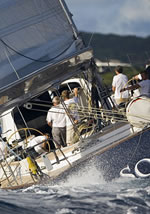 Ulysse Nardin, born in 1823 in Le Locle, Switzerland, was an acomplished watchmaker having first been trained under his father, Leonard-Frederic Nardin and later perfected his skills with two master watchmakers, Frederic William Dubois and Louis JeanRichard-dit-Bressel.
Ulysse Nardin, born in 1823 in Le Locle, Switzerland, was an acomplished watchmaker having first been trained under his father, Leonard-Frederic Nardin and later perfected his skills with two master watchmakers, Frederic William Dubois and Louis JeanRichard-dit-Bressel. Ulysse Nardin, the company, was founded in 1846 and remained under Ulysse's control until his passing in 1876, when his 21-year old son, Paul-David Nardin took over.
Since the founding of the company, Ulysse Nardin was known for their high-quality and high-accuracy craftsmanship, so much so that they became known worldwide for their Marine Chronometers, the most accurate mechanical clocks ever made, achieving a precision of around a tenth of a second per day.
In exhibitions held at various locations, such as Paris, London, Tokio or Buenos Aires, Ulysse Nardin received a total of:
14 Grands Prix (First Prizes)
the "Prize Medal" (1862 - London International Exhibition)
the "Progress Medal"
10 Gold Medals
2 Prix d'Honneur
2 Silver Medals
Until 1967, one second was defined by the rotation of the earth, and because of this, competitive chronometer watches were calibrated and certified in an astronomical observatory. The Observatoire Cantonal de Neuchâtel was the main Swiss observatory where such certifications were done, and in 1975, when the accuracy of mechanical timepieces became irrelevant with the advent of quartz watches, it released a publication regarding the performance of chronometers from 1846 to 1975: of the 4504 certificates awarded in this period, 4324 went to Ulysse 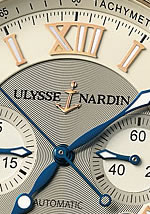 Nardin.
Nardin.
In 1983 Ulysse Nardin was purchased by a group headed by Rolf W. Schnyder, its current president. Mr. Schnyder brought in Dr. Ludwig Oechslin, a scientist, inventor, historian and watch-maker extraordinaire with whom they set out to design and develop complicated timepieces that had never before existed. The first example of this was the Astrolabium, introduced in 1985, part of the Trilogy of Time along with the Planetarium Copernicus (1988) and the Tellurium Johannes Kepler (1992).
The Ulysse Nardin Astrolabium, entered into the Guinness Book of Records in 1989 as the most complicated wristwatch ever made with 21 complications, indicates the position of the sun, the moon and the stars in the sky at any given hour as seen from Earth, as well as sunrise and sunset, dawn and dusk, moonphases, moonrise and moonset, eclipses of sun and moon, the month and the day of the week.
Piaget & Co Watches History
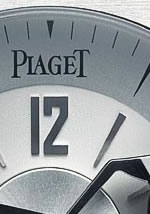 Piaget & Co. was founded in 1874 by Georges Piaget, a farmer who became a watchmaker in the village of La-Cote-aux-Fees. He decided to assemble watches in order to earn some extra money during the winters.
Piaget & Co. was founded in 1874 by Georges Piaget, a farmer who became a watchmaker in the village of La-Cote-aux-Fees. He decided to assemble watches in order to earn some extra money during the winters. Not much is said about the company's first years, only that his sons took over the business and run their father company through the First World War, the Second World War and the Great depression.
Before World War II, Piaget watches were sold through other companies which engraved their names on the dials. However, after World War II, Gerald and Valentin Piaget, the founder's grandsons, took over the company and decided to give the company a turnover and place it in the marketplace following a plan. A new collection of wristwatches was released and caused an awesome sensation. The rest is history.
Foreign markets such as the United States opened up during the 1950s and this led to the establishment of branch offices in New York, Geneva and Germany. It helped that the company introduced a number of innovative movements during this period, such as the ultra-thin nine line "9P" movement. This allowed Piaget to create a popular series of elegant, ultra-thin wristwatches for both men and women. Another commercially successful movement was the "12P", which was the world's thinnest automatic watch movement until 1967. 
In order to have a strict control of quality, the company bought up several case and bracelet manufacturers.
A few years late, Piaget's market started to change its focus. The watches featured an appearance of fine jewellery.
Not only could the dials be found in a number of styles, but also the materials used became exotic. There were more jewellers than watchmakers employed by the House.
Nevertheless, though Piaget did not ignore the new quartz technology, it continued manufacturing mechanical wristwatches.
Companies such as Rolex and Omega began to dominate the sports watch field, Piaget took a very sensible decision: he decided to specialise in the dress and jewellery watches.
Piaget was recognized as one of the world's most successful watch companies in the 1970s, thanks to successful model as the polo watches, which has an appealing solid gold brac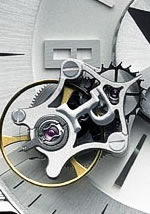 elet.
elet.
Piaget successfully brought the counterfeiters in Hong Kong and Italy to court, putting an end to the problem.
Nowadays, Piaget is extremely well known for its ladies watches and solid gold dress watches.
Though complicated watches continue to be produced in limited quantities, most Piaget watches are jewellery-oriented. To wit, Piaget buys several thousand carats of the best quality gemstones, together with five tons of gold. It should also be mentioned that every component in a Piaget watch, besides the movement, is made of solid gold, even the dials.
Patek Philippe Twenty~4®
 Patek Philippe Twenty~4® was created thinking about a refined, active woman of today who looks for a watch that shows her style and is to be wear on all occasions. Each model is characterized by perfection in craftsmanship, and curved silhouette of the case.
Patek Philippe Twenty~4® was created thinking about a refined, active woman of today who looks for a watch that shows her style and is to be wear on all occasions. Each model is characterized by perfection in craftsmanship, and curved silhouette of the case. Each model is recognized by Top Wesselton diamonds on the bezel, the case, and/or the bracelet. The crown of each Twenty~4® is studded with an onyx or a diamond solitaire. The gold collection consists of precious small-size models and pieces of high jewelry. A line of Twenty~4® rings and earrings accompanied the watch's collection.
Patek Philippe Grand Complications

Complications in watchmaking has become on of the most important challenges of the designer's expertise and watchmakers' skill. At Patek Philippe we master all horological complications and have twice this century built the world's most complicated portable timepiece. In order to make of this watch a jewel of timeless worth, artistic and skilled watchmakers have worked on this collection.
Patek Philippe Complicated Watches
 A 'complication' in watchmaking refers to mechanical features that a watch can have apart from telling the time and the date. Patek Philippe follows a tradition in complications that are necessary for everyday situations, such as Annual Calendars, dual time zones and World Time displays.
A 'complication' in watchmaking refers to mechanical features that a watch can have apart from telling the time and the date. Patek Philippe follows a tradition in complications that are necessary for everyday situations, such as Annual Calendars, dual time zones and World Time displays.
Patek Philippe Nautilus

Nautilus collection shows the flattering redesign Patek Philippe's elegance and sophistication. The universal shape of a porthole found on virtually all maritime vessels. The original model was the Ref. 3700/1 in steel. Nautilus is defined as a classic elegant sports watch and the original reference is one of the most sought-after timepieces at auction.
9.2.09
The History of Universal Watches
 The company "Universal Watch" was founded in Locle, one of the most important watch centres in Switzerland on the 18th of January 1894.
The company "Universal Watch" was founded in Locle, one of the most important watch centres in Switzerland on the 18th of January 1894. Numa-Emile Descombes and Georges Perret, both born in Locle, registered the name "Universal Watch" for the production of cases for watches, dials, domes, movements, fitted boxes and packages for watches.
This was an extremely sensible formula since it allowed the protection of the make and promotional material.
This very same year, Numa-Emile Descombes and Georges Perret patented a 24 hour indication watch.
Unfortunately, Numa-Emile Descombes died at the age of 34.
As a consequence, on July 1897, all makes were sent to Ulysse Georges Perret and Louis-Edouard Berthoud Universal watch had the ability to foresee the huge potential of wrist-watches together with chronographs.
In 1898 high quality wrist watches not only with chronographs but also minutes recorders were launched into the market.
It was soon after that "universal watch" increased its profits from its great growth in reputation in Europe as well as the two Americas. In 1919, the company later moved to the Geneva headquarter.
It was decided to undertake some research on self-winding systems for wrist-watches
In 1925, a watch with a similar system to that of John Harwood was created. Universal created "Auto-Re", a self-winding system with an oscillating weight mechanism with spring-buffers.
Raoul, son of Georges Perret, was force to take over his father company when his father died in 1933.
In 1934 ,due to the support received from some new investors, the company changed to "Universal Watch Co Ltd. Genève".
It was during that year that the first chronograph was introduced.
It was the first chronograph wrist-watch that had two push-buttons.
The company moved to 43, Rue du Rhône, which had an entrance at the famous Grand Quai. The name "Universal" was patented.
Simultaneously, a chronograph with an additional 12 hour register was introduced as a world premiere.
A new logo had to be presented due to the registration of the brand "Universal Genève" in 1937.
Even thou there was a world wide economic depression, the models "Compur" and "Compax" were so successful that the factory in Geneva was not able to meet peoples' demands and needs.
Eventually a chronograph factory had to be opened in Pont-de-Martel in 1941. 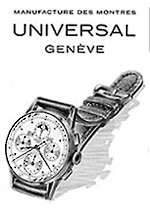
In 1944, the famous "Tri-Compax" model was introduced.
Sales increased incessantly all over the world. Therefore, Universal started to be a synonym for quality, good taste and reliability as well.
In 1947, as soon as the new precision automatic caliber 138 with an oscillating mass with single direction winding was introduced, Louis-Edouard Berthoud died.
The model "Polerouter", which was previously called "Polarouter", was introduced soon after the new factory in Geneva was inaugurated.
The watch was used by SAS crews during their polar flights.
In 1955 Universal Genève registered the calibre 215 "Microtor", a new model of an automatic calibre with the rotor mass incorporated in the movement.
Although it was the smallest automatic movement at that time, it was introduced in the 2nd generation of the famous "Polerouter".
The following decade it was quite noticeable the great progress in developing an introducing thinner automatic movements.
In 1966, the model "Golden Shadow" was presented.
Gerald Genta was the designer of the calibers s 66 and 67 with a thickness of 2, 5 mm.
In 1962, the first electric watches with a torsion oscillator were produced in conjunction with Movado.
In 1968, the first electronic watches were introduced, with the "Tuning Unisonic" system. They were manufactured in collaboration with Bulova.
In 1975 the thinnest analogue quartz movement in all over the world was introduced. It allowed Universal to face the "Japanese invasion" for some time.
Universal had always set its mind to combine quality and good classic taste.
The make had many admirers, from Harry Truman to Juan Peron.
It is possible to read on the dials of the new tourbillons a dedication from the artist Jean Cocteaux. It says "Les temps lui-meme regarde l'heure à la montre Universal",It was ordered form different sheiks and Arabic ministers luxurious custom made watches.
Golden watches with exquisite enamel dials are still being sought after.
Gerald Genta, one of the most famous watch designers of the twentieth century, was a contributor of the success. She designed two models which became famous all over the world: the "Polerouter" in 1954 and the "Golden Shadow" in 1966. 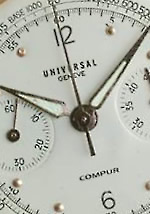
Due to these two watches, Universal received the "New York Diamond Award", the "Golden Rose" in Baden-Baden, the Grand Prix of the "Ville de Genève", the "Città di Basilea" prize and the 1st price in the "Exposition Nationale Suisse" in 1964.
In 1886, after the company had been managed by the heirs of the founders, Lennard Oldman was chosen as new President of Universal Genève.
In 1988 the headquarter moved to 29, Rue de Jussy in Geneva-Thônex.
The very same year the logo changed to look they way it looks nowadays.
Due to a long crisis which struck the Swiss watch industry, the company was later taken over by the Stelux holding group in 1989
In 1993, a new production unit was open at Bienne.
The head office is now located in Geneva-Acacias after relocating for a long period of time.
Today the Universal Genève focuses on its qualities and tradition. The collection includes watches in an attractive "retro-design" , making reference to some of the greatest models of the company history.
The aim is to create new models, which derive from the famous Calibre 66, which will become the new generation of Universal Genève watches.
Patek Philippe Aquanaut
 Patek Philippe Aquanaut model fulfills two characteristics at the same time, the elegance and the casual style mixing quality in technical features and the creativity in the original design. The case is underscored by the screw-down crown for extra protection on the wrist of active people. Apart from that, Aquanaut has a modern gestalt with a rounded octagonal shape. The surface structure of the landmark dial reflects the texture of the strap made of a high-tech composite. It is soft, comfortable, resistant and hypoallergenic.
Patek Philippe Aquanaut model fulfills two characteristics at the same time, the elegance and the casual style mixing quality in technical features and the creativity in the original design. The case is underscored by the screw-down crown for extra protection on the wrist of active people. Apart from that, Aquanaut has a modern gestalt with a rounded octagonal shape. The surface structure of the landmark dial reflects the texture of the strap made of a high-tech composite. It is soft, comfortable, resistant and hypoallergenic.
Patek Philippe Gondolo
 The Gondolo collection was introduced in 1993 and in this creation Patek Philippe's shows his inclination for the Art Deco style. The Gondolo shows Patek Philippe's aim to create watches which make history in the company. The name of the collection arose because of the "Chronometro Gondolo" watches produced by Patek Philippe for Gondolo & Labouriau company.
The Gondolo collection was introduced in 1993 and in this creation Patek Philippe's shows his inclination for the Art Deco style. The Gondolo shows Patek Philippe's aim to create watches which make history in the company. The name of the collection arose because of the "Chronometro Gondolo" watches produced by Patek Philippe for Gondolo & Labouriau company.
Patek Philippe Golden Ellipse
 The Patek Philippe Golden Ellipse introduced in 1968 was inspired in one of the most beautiful chapters of horological history characterized by perfect proportions and a beautiful case. Golden Ellipse has become one of the flagships of the Patek Philippe collection and of course one of its most valued creations due to its incomparable simplicity and formal purity. The elliptical design is based on the golden section, a ratio discovered more than two thousand years ago.
The Patek Philippe Golden Ellipse introduced in 1968 was inspired in one of the most beautiful chapters of horological history characterized by perfect proportions and a beautiful case. Golden Ellipse has become one of the flagships of the Patek Philippe collection and of course one of its most valued creations due to its incomparable simplicity and formal purity. The elliptical design is based on the golden section, a ratio discovered more than two thousand years ago. The Golden Ellipse is a model characterized with the balance and visually attractive.
Patek Philippe Calatrava
 Patek Philippe's signature model
Patek Philippe's signature modelCalatrava collection shows a remarkable precision, characteristic that appears in every Patek's Pilippe creation, as well as an original artistic touch that makes this watch unique. Calatrava collection was born as a result of an avant-garde philosophy of aesthetics that highlighted sleek lines and insuperable elegance. Ladies' and men's watches were chosen as jewels in every new generation. Calatrava models are recognized for being extra thin, and having hobnail patterns or wide polished bezels and changing faces. These patterns make Calatrava models unique. This watch clearly shows the real Patek Philippe style.
The History of Patek Philippe
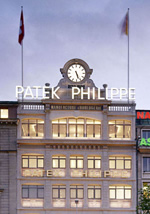 Antoni Norbert de Patek was a brave and intelligent soldier who took part of the Polish rebellion against Russian domination in 1830. After that, Patek among other people were forced to leave Poland and it was in 1833 when this man settled down in Switzerland.
Antoni Norbert de Patek was a brave and intelligent soldier who took part of the Polish rebellion against Russian domination in 1830. After that, Patek among other people were forced to leave Poland and it was in 1833 when this man settled down in Switzerland. By this moment Patek started developing his artistic abilities and he began studying with the well known landscape artist, Alexandre Calame. Together with his passion for the art Patek bought his first watch movements and then sold completed watches to Polish clients. Soon he became a businessman buying and selling watches to an influential Polish clientele. Due to the growth on this business, he thought about performing his own watches company considering the possibility of having a partner and he chooses his friend Franciszek Czapek.
In 1839 Antoni Patek and Franciszek Czapek settled down a company named "Patek and Czapek". At the beginning the company had no employees so they purchased movements from various companies specialized in the manufacturing of raw movements (ebauches), sent them to a case maker to be cased, and then finished them in their shop.
But in 1844 Patek met the young French inventor of the keyless winding mechanism; Adrien Philippe and he decided to start a new partnership leaving aside Franciszek Czapek. That was not an easy issue. Replacing Franciszek Czapek could mean loosing the current clientele and being in risk of bankruptcy. However, he made the decision. In 1845 Philippe became the head watchmaker and together with Vincent Gostkowski, Philippe and Patek signed an agreement. One of the clauses of the agreement stated that Patek was in charge of the general direction of the firm and for its marketing, Gostkowski of the accounting and correspondence, and Philippe responsible for the watchmaking. Patek was the only person entitled to make executive company decisions despite of the fact that Gostkowski and Philippe each received one third of the company's profits. During these years the company bought unfinished movements from several companies, including Louis Audemars, Vacheron & Constantin, Breguet, Doloche, Dupan et Haim, Piguet et Fils, Le Coultre, among others for Patek & Cie, but they did not produce its own movements. Patek, being afraid Czapek would create a rival company, took his cautions in replacing Czapek in the partnership. But it was not enough because Czapek not only established a new company but also he made Patek`s clientele leave him. Soon Czapek`s company became a serious competition as well as Patek`s new partnership with Philippe started to succeed. Philippe introduced in 1850 the first ebauches distinct movements thanks to the machinery Philippe acquired for the company. The first ones were stamped with "PP" on the dial plate. After that, an important event would change Patek`s fortune. Queen Victoria was going to buy to Patek & Co. a small lady's watch, about 30 mm. in diameter, which needed no key for win-ding or setting. This dated from 1857 when Queen Victoria attended the Universal Exhibition in London. And also did Prince Albert. With this immediately, Patek`s company gained prestige. Later, the company`s name changes to Patek Philippe & Cie. One by one, Patek`s financial problems began to disappear and he introduced his products on several markets such as Russia and also he supplied Rodanet of Paris, Peña in Madrid, Elimayer in Leipzig.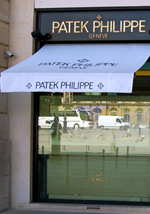
After world was divided into 24 time zones in 1870, most watchmakers tried to develop a device which would indicate the time in at least two different cities in the world. Later, Louis Cottier, an independent Genevan watchmaker created an ingenious universal time display mechanism that allowed watches to simultaneously indicate the local time in several cities. Cottier also created several series of universal time watches for Patek Philippe.
Patek Philippe constitutes one of the first watchmaking firms to enjoy business relations with the United States, signing an exclusive agreement with Tiffany & Co. New York. The firm is known in Latin America when business relations began with distributors Gondolo & Labouriau, in Rio de Janeiro.
Wearing a watch around the wrist was catching on, so watchmakers began challenging the integration of various complications into their new timepieces. Patek Philippe`s introduced his first perpetual calendar wristwatch in 1925. Apart from that, to indicate the day, date and month, considering the number of days of each month (29, 30, 31) and also the 29th of February in leap years, Patek Philippe`s displays the ages and phases of the moon. Patek Philippe`s general production introduced the first bracelet chronographs with or without a split-second mechanism and wristwatches with minute repeating.
The economic crisis of 1929 made the production to slow down throughout the 1930`s.
Although the economic problems, Patek Philippe`s continued developing its creativity and produced remarkable timepieces such as the "Calatrava" with triple date and perpetual calendar (with aperture), age and phases of the moon and minute repeating. This watch, the most complicated of its time, was encased in a new design named "Calatrava".
The name Calatrava has historical origins that are dated from the middle-ages when a Spanish religious order defended the Calatrava citadel against the moors. At the end of the nineteenth century, Patek Philippe adopted the emblem of the brave Spanish knights as its brand symbol, which signs Patek Philippe watches today.
In 1932 the company was bought by two brothers: Charles and Jean Stern and since then the company became a family company; Mr. Philippe Stern, President and Mr. Thierry Stern, his son, Vice-President.
In 1976 Patek Philippe introduced the Nautilus sports watch collection and in 1993 the Gondolo collection.
The beautiful Patek Twenty~4® ladies watch was launched in 1999 and it is a modern interpretation of the Gondolo timepiece
Today Patek Philippe continues researching and developing new inventions and techniques for the watchmaking industry.
Patek is considered for many the best watches ever made.
4.2.09
Panerai Models and Reference Information
'Radiomir' and'Luminor' originally referred to the patented luminescent substances used in each model; today the titles refer only to the watch case. While the Panerai Radiomir features an exposed crown and patented wire loop strap attachments the Panerai Luminor is distinguished by a trademarked bridge that protects and locks its crown in place. Panerai Radiomirs have been produced in 40, 42, and 45mm variations. | |
| The following photograph displays the three reference codes that are printed on the watch case of each Panerai: |
The History of Panerai
 Officine Panerai, a storied Italian watchmaker that in recent years has emerged as one of the most sought-after brands in the industry (and is characterized by its fiercely loyal following of collectors and aficionados), derives much of its legacy from its historical role as the official supplier of the Royal Italian Navy. Its marquee model lineages - the Panerai Radiomir and the Panerai Luminor - were developed expressly in response to the stringent demand requirements of the Italian divers, submariners, and commandos who would be employing them on critical underwater assignments. The brand's military pedigree is reflected in the understated elegance of its austere black faces and luminous Arabic numerals and sticks that make Panerai one of the most iconic brands on the luxury market today.
Officine Panerai, a storied Italian watchmaker that in recent years has emerged as one of the most sought-after brands in the industry (and is characterized by its fiercely loyal following of collectors and aficionados), derives much of its legacy from its historical role as the official supplier of the Royal Italian Navy. Its marquee model lineages - the Panerai Radiomir and the Panerai Luminor - were developed expressly in response to the stringent demand requirements of the Italian divers, submariners, and commandos who would be employing them on critical underwater assignments. The brand's military pedigree is reflected in the understated elegance of its austere black faces and luminous Arabic numerals and sticks that make Panerai one of the most iconic brands on the luxury market today. Founded on the famed Ponte alle Grazie in Florence by Giovanni Panerai in 1860, the predecessor of what would become Officine Panerai was the first watchmaking shop established in the city and from its inception maintained close professional ties with its prestigious counterparts in Switzerland. Under the stewardship of Guido Panerai, the founder's grandson, the enterprise specialized in building precision instruments and by the turn of the century it had been chosen as the Navy's official supplier and moved to a new location on the Piazza San Giovanni (where the flagship Panerai boutique can be found today)
In the first decades of the 20th century Panerai began experimenting intensively with luminous materials in an effort to make instrument dials, sights, and telescopic devices that could be employed reliably in the dark. They settled on a patented combination of zinc sulphide and radium bromide that was later given the name Radiomir. Perfected by Giuseppe Panerai in the 1930s, a prototype Panerai Radiomir wristwatch was submitted to the First Submarine Group of the Royal Italian Navy in 1936 for approval. The watch was hailed for its performance and by 1938 the prestigious Panerai Radiomir was being employed by elite teams of Italian naval commandos in the field.
The Panerai Radiomir first gained the attention of watch enthusiasts during the Second World War as a result of its association with the audacious operations being carried out by Italian divers in the Mediterranean. The most famous of these attacks took place in December of 1941 when a group of six Italian commandos successfully crippled two British battleships, a tanker, and a destroyer in the port of Alexandria, Egypt. The leader of the squad, Lieutenant Luigi Durand De La Penne, was captured during the operation while attempting to save one his men and was subsequently interrogated aboard one of the targeted battleships. Though he refused to disclose the location of the charges he warned the British captain that he would need to evacuate his ship immediately if he wanted to save his crew. De La Penne and his partner were left in the hold while the ship was abandoned and miraculously survived the explosion that crippled the vessel. The British were so impressed by his conduct that he was later recommended for the gold medal of honour; one British admiral went so far as to describe him as 'the deliverer of the greatest blow that a single man has ever inflicted on a fleet.' By the end of the conflict the limited number of Panerai Radiomirs in circulation had become highly sought after collectors items.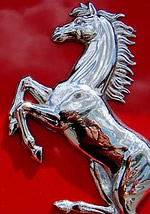
In the early 1950s the venerable Panerai Radiomir was accompanied and later replaced by the Panerai Luminor. Although the Luminor preserved the Radiomir's emblematic watch case and dial it also incorporated several design advances including a distinctive bridge with a unique mechanism for locking the crown (the feature is so unique that it is now trademarked by Panerai) and an 8 day power reserve that greatly reduced the frequency with which the crown would need to be wound.
Panerai's wrist watches were reserved exclusively for military clients until the end of the 1980s. Although Panerai began selling directly to the public in the early 1990s, it was only after its 1997 acquisition by the Richemont Group - the same entity that manages the Cartier and IWC brands - that the brand began to garner wide international attention. Seizing upon the enormous potential of the Panerai legacy, Richemount re-introduced the historical Panerai Radiomir and Panerai Luminor models in their manual form and launched its own contemporary collection of automatic watches inspired by the classic lineages. Today Panerai is one of the most coveted and respected brands in the contemporary watchmaking industry. With its distinctive aesthetic identity, compelling historical legacy, and reputation as a brand favored by sophisticated aficionados it is little wonder that the ranks of Paneristi have grown so dramatically around the world.
3.2.09
Omega Specialities
 Omega has developed a series of watches that are considered special among the others. Every watch of this line has a particularity that makes it collectable.
Omega has developed a series of watches that are considered special among the others. Every watch of this line has a particularity that makes it collectable. Either for mens or ladies in different materials or conceived for different themes Omega is proud to offer his Specialties for his fans.
Specialities Ladies Aquarella
Specialities Ladies Jewelery
Specialities Ladies Olympic Collection Tímeles
Specialities Ladies Omegamania
Specialities Mens Jewelery
Specialities Mens Olympic Collection Beijing 2008
Specialities Mens Olympic Collection Timeles
Specialities Mens Tourbillion
Omega de Ville
 The prestige of De Ville
The prestige of De Ville Not only Omega watches are known for their extraordinary precision, accurate chronographs and reliability, but also for their absolute beauty, which is realized by the most acknowledged artists of the world. Designed in sake of attracting those who prefer the best classic tradition, with a little touch of the contemporary spirit, the Omega De Ville watches are provided with the best movements that perfectly fit this elegant lineage.
In 1999, a unique and completely new Omega De Ville watch was born. No other mass-produced watch in history had the heart like this one, except for some watches which price was about $150.000 USD. The elegant and exceptional Omega De Ville Co-Axial watch, supplied with a co-axial escapement and free sprung balance, has one of the most advantageous movements and was invented by the well-known English watchmaker Dr. George Daniels. It has a greater exactitude, shock-resistance and requires less service than many other watches.
A symbol of refinement and a very reliable watch, Omega De Ville is especially esteemed for its peculiar elegancy and exceptional case finish. Its forms and proportions, made in a classic style, perfectly outlined spheres and edges and precious metals used for its manufacture guarantee the abiding beauty of Omega De Ville's design that challenge the momentary trends.
Omega De Ville, well-known for its refined case design and adherence to the classic watchmaking standards, has won many important awards for being the personification of classic elegancy and the most advanced wristwatch movement building technology.
Ernie Els, one of the top professional golf players in the world and Omega golf ambassadors, states that Omega embodies a subtle combination of precision and power.
All these features make Omega De Ville perfect for casual watch wearers or collectors.
De Ville Ladies Co-Axial Automatic
De Ville Ladies Co-Axial Chronograph
De Ville Ladies Co-Axial Chronoscope
De Ville Ladies Prestige Quartz Small
De Ville Mens Co-Axial Chronograph
De Ville Mens Co-Axial Chronograph Mid-Size
De Ville Mens Co-Axial Chronometer
De Ville Mens Co-Axial Chronometer Mid Size
De Ville Mens Co-Axial Chronoscope
De Ville Mens Co-Axial GMT
De Ville Mens Co-Axial GMT Mid-Size
De Ville Mens Co-Axial Power Reserve
De Ville Mens Co-axial Power Reserve Mid-Size
De Ville Mens Co-Axial Rattrapante
De Ville Mens Hour Vision
De Ville Mens Prestige Automatic
De Ville Mens Prestige Quartz
De Ville Mens Prestige Small Seconds
De Ville Mens X2 Big Date
De Ville Mens X2 Small Seconds
Omega Speedmaster

First watch on the Moon and Mars only the sky is the limit.
Exactly at 2:56 GMT on July 21, 1969, the landing of the first humans on the Moon is seen as Neil Armstrong said That's one small step for man, one giant leap for mankind. After satisfactorily passing exhaustive tests designated by NASA, Omega Speedmaster was chosen as the first watch taken to the space. It was worn for intra and extra vehicular activities, including the moonwalks, on all the missions. During extra vehicular activities the astronauts wore the watch on the outside of their pressure suits. After that it became Omega Speedmaster Professional Chronograph, the first Moon Watch. It is still present on Shuttle missions nowadays.
In 1970, the chronograph feature of the Omega Speedmaster Professional was fundamental for giving guidelines to the crew that used the Lunar Module as a lifeboat in space and successfully returned to Earth.
Today, on its way to the planet Mars, Omega's Speedmaster X-33 is the pioneer of the space exploration. After 5 years of development and tests, Omega presented a new Omega Speedmaster X-33 watch in 1998, which is now flight-qualified by both NASA and the Russian space agency MIR astronauts and cosmonauts. It is also included as an item of standard equipment and is worn for extra-vehicular activity.
The Omega Speedmaster has become the most tested watch in the world.
Together with the beginning of the new century, the space conquerors and the high technology enthusiasts, for instance Michael Schumacher, keep on trusting Omega Speedmaster Professional.
Speedmaster Ladies Automatic
Speedmaster Ladies Reduced
Speedmaster Mens 50th Anniversary Limited Series
Speedmaster Mens Broad Arroz
Speedmaster Mens Broad Arrow GMT
Speedmaster Mens Broad Arrow Rattrapante
Speedmaster Mens Date
Speedmaster Mens Day-Date
Speedmaster Mens Legend
Speedmaster Mens Professional
Speedmaster Mens Reduced
Omega Seamaster
 For adventure lovers, on land and in sea
For adventure lovers, on land and in sea The legendary Omega Seamaster watch has been created to challenge the toughest conditions and to seize the moment of the most exciting experiences of men. Its precision, strength and resistance make it a favorite choice for many sportsmen; among them, Alexander Popov, who is one of the world's best swimmers of the 1990s. The fictional character James Bond, agent of the international arm of the British Secret Service, owns his life to a Seamaster.
Omega Seamaster has numerous angles and curves which vary the way light is reflected from its case and yet, there are no sharp corners which make it completely comfortable. Omega Seamaster is one of the most legible watches in the dark due to its luminescent coating on the hands and markers which makes it absolutely perfect for deep dives. All Omega Seamaster have a Sea Monster logo on the case back.
1932: Omega introduces the first water resistant watch (some claim the first in the world), Omega Marine. It was water resistant to 13.5 atmospheres that equals to 135 meters and was the first in the Seamaster lineage. Omega Marine made history in the ocean conquest and received enthusiastic testimonies from submarine explorers.
1948: the first Omega Seamaster watch is produced. It is inspired by the Omega Marine's waterproof qualities, as well as by the famous The 30 mm model, which was widely sold to the British army during the II World War and proved to be the most precise wristwatch caliber ever tested at Geneva.
1962: a north American pilot and submariner declares that several days after his hydroplane sank he was diving at a 45 meter depth looking for some stuff that could be recovered, and the only things he found were his underwater camera and his Omega Seamaster watch which started to run as if nothing had happened. But the most amazing fact is that his Omega Seamaster was guaranteed waterproof only to 30 meters!
1981: a French Jacques Mayol breaks a world's record in scuba diving without any breathing equipment near the Elba island, he submerges 101 meters deep and wears Omega Seamaster watch.
1995: Team New Zealand wins the America's Cup, the most famous and most prestigious regatta and Match Race in the sport of sailing from 1851. Sir Peter Blake and each crew member have an Omega Seamaster on their wrists. Omega is the official timekeeper for the America's Cup 2000 and for its champions, the Team New Zealand.
2000: breaking news: for the second consecutive time Sir Peter Blake and his crew Team New Zealand win the America's Cup which is time kept by Omega.
Seamaster Ladies 300 M Quartz
Seamaster Ladies Aqua Terra Automatic
Seamaster Ladies Aqua Terra Quartz
Seamaster Mens 300 M Chrono Diver
Seamaster Mens 300 M Diver Chronometer
Seamaster Mens 300 M GMT
Seamaster Mens 300 M Mid Size Chronometer
Seamaster Mens 300 M Mid Size Quartz
Seamaster Mens 300 M Quartz
Seamaster Mens 300 M Racing Chronometer
Seamaster Mens Apnea
Seamaster Mens Aqua Terra Big Size Chronograph
Seamaster Mens Aqua Terra Big Size Chronometer
Seamaster Mens Aqua Terra Chronometer
Seamaster Mens Aqua Terra Mid Size Chronometer
Seamaster Mens Aqua Terra Mid Size Quartz
Seamaster Mens Aqua Terra Quartz
Seamaster Mens Aqua Terra Railmaster Chronometer
Seamaster Mens Aqua Terra XXL Chronometer
Seamaster Mens NZL-32 Chrono
Seamaster Mens Planet Ocean
Seamaster Mens Planet Ocean Big Size
Seamaster Mens Planet Ocean Chrono
Omega Constellation
 Universal symbol of success among the stars
Universal symbol of success among the stars Omega Constellation has a very unique design, elegant and sporty at the same time. A case with curved claws, a bezel engraved with Roman numerals, a golden star applied on the dial, and the Constellation Observatory logo on the case back can be mentioned among the most distinctive characteristics of this lineage.
Omega Constellation is chronometer certified which means that it is a high-precision watch. It was tested and certified by the Official Swiss Chronometer Testing Institute (COSC).
Due to its excellency and precision, Omega Constellation has earned the admiration of well known personalities such as Cindy Crawford, Pierce Brosnan and Martina Hingis.
Additionally, the characteristic round shapes of its case make Omega Constellation an extremely comfortable watch to wear in everyday life.
Constellation Ladies Automatic
Constellation Ladies Double Eagle Chronometer
Constellation Ladies Double Eagle Quartz
Constellation Ladies Iris '95 Automatic
Constellation Ladies Iris '95 Quartz Mini
Constellation Ladies Iris '95 Quartz Small
Constellation Ladies Iris My Choice Automatic
Constellation Ladies Iris My Choice Quartz Mini
Constellation Ladies Iris My Choice Quartz Small
Constellation Ladies My Choice Automatic
Constellation Ladies My Choice Quartz Mini
Constellation Ladies My Choice Quartz Small
Constellation Ladies Quadra Quartz Chronograph
Constellation Ladies Quadrella Quartz
Constellation Ladies Quadrella Quartz Mini
Constellation Ladies Quartz Mini
Constellation Ladies Quartz Small
Constellation Mens Chronometer
Constellation Mens Double Eagle Chrono
Constellation Mens Double Eagle Chronometer
Constellation Mens Double Eagle Perpetual Calendar
Constellation Mens Perpetual Calendar
Constellation Mens Quartz
The History of Omega
 Omega is the last letter of the Greek alphabet and it represents perfection and success in the attainment of a task. The Omega story began in 1848 at La Chaux-de-Fonds, Switzerland, when its founder Louis Brandt at the age of 23 opened a comptoir d'établissage, a sub-contracting sales office for watch manufacture.. In 1880, due to the greater supply of manpower, communications and energy, Louis-Paul and Cesar Brandt moved into a small factory in the city of Bienne /Biel. With the introduction of their first series-produced calibers, Labrador and Gurzelen, in 1895 the watches achieved a precision of within 30 seconds a day.
Omega is the last letter of the Greek alphabet and it represents perfection and success in the attainment of a task. The Omega story began in 1848 at La Chaux-de-Fonds, Switzerland, when its founder Louis Brandt at the age of 23 opened a comptoir d'établissage, a sub-contracting sales office for watch manufacture.. In 1880, due to the greater supply of manpower, communications and energy, Louis-Paul and Cesar Brandt moved into a small factory in the city of Bienne /Biel. With the introduction of their first series-produced calibers, Labrador and Gurzelen, in 1895 the watches achieved a precision of within 30 seconds a day. Four years later, Louis Brandt & Fils became the largest producers of watches in Switzerland, with a production rate of 240,000 watches produced annually and employing 800 people. But this fact did not stop the exclusivity of the watches they produced: a clear example is the minute-repeating wristwatch, developed in 1892 in partnership with Audemars Piguet, and probably the first wristwatch of its kind. The famous Omega caliber became a brilliant market performer when it went into production in 1894. Its major points for salability were in its easily interchangeable parts, and its simplicity of construction. The company's banker, Henri Rieckel, suggested the name "Omega" for the new watch. The overwhelming success of the "Omega" name led to it being adopted as the sole name for all the watches of the company from 1903.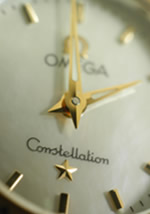
Both Brandt brothers died in 1903, placing the fate of the company in the control of four people, the oldest of which, Paul-Emile Brandt, was only 23 years of age.
Omega made its debut in sports during the international ballooning for the Gordon Bennet cup contest timing several events. The British Royal Flying Corps decided to choose Omega watches in 1917 as their official timekeepers for its combat units, as did the American army in 1918. Omega was the first company to be entrusted with the official timekeeping of all disciplines at the Los Angeles Games in 1932. From sports to scientific scuba-diving, the Omega Seamaster line was created.
One of Omega's most noteworthy achievement was the world record of accuracy granted by the English observatory of Kew-Teddington in 1936.
In 1952, Omega was also awarded the Olympic Cross of Merit for "exceptional services to the world of sport".
The Omega Speedmaster was created in 1957. After rigorous evaluation and testing, NASA decided to use the "Omega Speedmaster Professional Chronograph wristwatch in 1965 as its official timekeeper. In 1967, the one millionth chronometer was certified.
On 21st July 1969, astronaut Neil Armstrong became the first man to step on the moon. As he made the famous steps quoting "one small step for man, one giant leap for mankind", h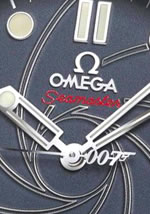 e was wearing his Omega Speedmaster Professional chronograph. With this unique accomplishment came a unique nickname: the Moon Watch.
e was wearing his Omega Speedmaster Professional chronograph. With this unique accomplishment came a unique nickname: the Moon Watch.
In April 1970 the Omega Speedmaster rescued the Apollo XIII mission from a potential disaster, earning Omega the "Snoopy Award", the highest distinction granted by NASA.
The Russian Space Agency also chose the Omega Speedmaster chronographs to accompany their astronauts.
In 1974 Omega produces Marine Chronometer 2400 which is the most accurate and the most technologically advanced wristwatch in the world. This legendary "Omega Megaquartz" marine-chronometer had a daily timing variation of just two thousands of a second, in a trial lasting for 63 days.
In its search of elegance, Omega has relied on the most prestigious jeweler designers and created real masterpieces of the highest refinement. As a result, in 1985, Omega received the Triomphe de l'excellence européenne prize for the quality and originality of its models.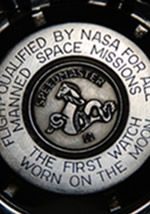
On the 18th of May 1983, Omega received its 100,000th official rating certificate for quartz chronometers. A museum for the company was opened on 16th December 1983. In 1995, presentations were made of the first automatic wristwatch with a centrally mounted tourbillion. In 1999 Omega made history by introducing the first mass-produced watch incorporating the revolutionary "co-axial escapement"- invented by English watchmaker George Daniels. Considered by many to be one of the most significant horological advancements since the invention of the lever escapement, the co-axial escapement functions with virtually no lubrication thereby eliminating one of the shortcomings of the traditional lever escapement. This improvement has extended service intervals to around 10 years.
Chronographs
 The company started to show its affinity with sporting events during the 30s and 40s, producing a lot of unusual types of chronographs.
The company started to show its affinity with sporting events during the 30s and 40s, producing a lot of unusual types of chronographs. Many were manufacturer with Longines's own movement, unlike the rest of the companies which would rather buy chronograph from other companies.
Therefore, the Longines chronographs, those which were produced from the 20s to the 50s are highly prized and have their own separate niche in the collecting world.
The best of Longines's chronograph movements was said to be the Caliber 13 ZN
It was first released in Longines' 2-register models, but was later adapted for use in its 3-register models.
The following chronographs would show movements made by Valjoux and others. These are not recognized nearly as collectible as the chronographs with Longines' own movements.
The History of Longines
 As soon as Ernest Francillon opened a small manufacturing plant, which started to produce the following year, the story of Longines started in 1866.
As soon as Ernest Francillon opened a small manufacturing plant, which started to produce the following year, the story of Longines started in 1866. Francillon, who was the grandson of Auguste Agassiz (a pioneer of Swiss horology whose name appears on wrist and pocket watches of high-quality), learned his trade at his grandfather's watch assembly shop, the "comptoir". He would finally become director of the shop, but this thirty-two-year old man got acquainted with the limits of the comptoir and the areas in which he would be more likely to have a better production.
The first Longines watches arrived in America in 1868. A few years later, Longines was awarded a gold medal for precision and reliability at the Universal Exposition of Vienna.
To prevent himself from imitation, Francillon decided to trademark the dials on his watches with a winged clepsydra and the word "Longines".
A clepsydra is an ancient device which measured time by marking the regulated flow of water though a small opening. Looking carefully at the centre of the Longines trademark a small box that represents this device is seen.
The company eventually departed from this procedure fairly quickly because there are several Longines watches that do not have the logo.
In 1889, Longines provided five chronometers to the Italian explorer Luigi Amedeo, who did his best to reach the North Pole. 
His failure is hardly noted in history books, but the mark Longines'illuswtrious history as the watch choice by explores and adventurers.
In 1904, Longines furnished chronometers to a U.S. naval exploration of the North Polar Region. Unfortunately, Robert E. Peary was the first to reach the North Pole in 1909. Longines, unfortunately, missed the chance to be part of that event.
At the beginning of 1900s, Longines started to express an interest in gentlemen's wrist watches and joined other Swiss makers which showed the same interest as well.
The Longines Co. states that the first wrist watch was cased in 1905.
The first wrist chronographs to appear in the sports market were seen in 1910s. Moreover, Longines produced military watches for World War, some of the, with pierced shrapnel covers, "demi-hunter" cased varieties, and others for being used at sea and in the air.
Around 1920 - 1930s the golden years for Longines started. The factory had a remarkable growth from 20 to 2.500 workers, who produced more than 122.000 pieces every year.
Longines would be recognized as the constant and steady companion of many pioneering aviator in a decade that aeroplanes and airships were recognized as military and exploration tools of great importance. 
Aeroplanes started to experience several problems such as magnetism, moisture, low temperatures, issues which had to be overcome right away. And Longines was acquainted with theses issues after having experienced the Artic cold temperatures.
It was during this era that Longines would produce its most famous two wrist watches -- the Weems and the Lindbergh models. (The Lindbergh is also referred to as the Hour Angle Watch.)
In 1930, Admiral Richard E. Byrd would arrive to the South Pole for the first time. His trips would always find him with a Longines on his wrist.
The A. Wittnauer Co. would become the exclusive sales agent for Longines in1880. This relationship lasted for the next 114 years.
In 1936, the Wittnauer family sold A. Wittnauer Co. and renamed the Longines-Wittnauer Co. the name became so pervasive that some people think that the watches are synonymous. But, of course, they are not. Their movements are distinct and not interchangeable with one another.
World War II and beyond
The company began to produce military issue watches during the Second World War. Most of these watches were for the European forces.
In 1994, Longines and Wittnauer parted company, and Swiss giant SMH, which holds title to Hamilton, Omega and Tissot, got the name.
2.2.09
Lancaster Ceramik Watches
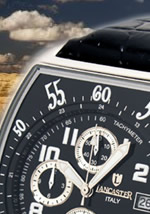 In 1992, the first collections of LANCASTER 'SWISS MADE' watches come out.
In 1992, the first collections of LANCASTER 'SWISS MADE' watches come out. These collections of mechanical watches, which included several new complications, were created by four Swiss 'Maisons d'Horlogerie' togl'.
In 1995 Lancaster completely modified its manufacture and business tactics.
The brand had only been regarded as a watch that only had some pieces which were produced and sold to the Italian market. Therefore, Alvea comes to the decision of having an industrial distribution.
In just one year and due to a strong advertising campaign, Lancaster mechanical watches, which turn into analogical, are able to reach the Italian market with more than 1.000 retail shops.
The brand decides to work towards new objectives such as establish new shops and search new markets. 
In 1997 Basel Fair triumphed and its huge achievements allow Lancaster to sign distribution contracts in Lebanon, Greece, Kuwait, Saudi Arabia, Spain, France, Columbia, Spain, and Egypt, amongst others, introducing some sport watches collections with an excellent price/quality relation.
In 2000 Lancaster experienced a crucial year due to the change in fashion as regards watchmaking. Anyway, Lancaster decides to beat its competitors producing new 'Fashion' collections which were entirely different from the great mass offers which were available in the market at that time.
The first "Intrigo' aluminum collections which featured colored dials and straps emerged, surpassing any competitors and being the center of attention and an article of imitations.
At the present time, Lancaster watches is an exceptionally popular brand in the field of watch brands, and, due to the success accomplished in 2000, began to boost the activities so as to help the Brand developed quickly.




